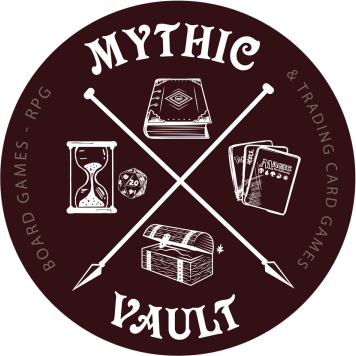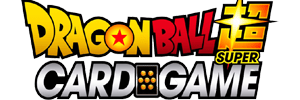Some people alternate pressing the A and B buttons, others hold down A, and some press B just before the final “shake” of the Pokéball, but no one knows exactly how this helps in catching a Pokémon. In reality, all of this is completely futile, and the whole process is an illusion.

So, this article is here to reveal the whole truth and mechanics about how catching a Pokémon is determined – perhaps the most important process in the game, as without it, we would be left with just the starters!
Let’s start with the basics and the easy part: If you use the rare Master Ball, success is guaranteed as it has a 100% catch rate, mathematically speaking.
There are many parameters that determine the catchability of a Pokémon. Some of these include the Maximum HP, the current HP, the status of the Pokémon, and most importantly, the Catch Rate.
The Pokémon’s Catch Rate is a number ranging from 0 to 255, where a higher value is better.
Now, let’s delve deeper into some math. The basic formula that determines the catchability of a Pokémon is as follows:
CatchValue = (((3 * Maximum HP – 2 * Current HP) * (Catch Rate * Pokéball Type) / (3 * Maximum HP)) * Status
The various values that each of these variables can take are explained later in the article.
After calculating the CatchValue, if it is 255, then we have caught the Pokémon 100%. If not, there is another formula below that determines to what extent the Pokémon will become ours!
Catch = 1048560 / √(√(16711680 / CatchValue)) = (220 – 24) / √(√((224 – 216) / CatchValue))
When we throw a Pokéball and it shakes, a random number is generated. If this number is greater than the value obtained from the Catch formula mentioned above, we lose the Pokémon. However, if it is smaller, we proceed to the next “shake” and generate another random number, repeating this process for 3 times (3 shakes) until we catch the Pokémon.
Now, as for the variables of Maximum HP and Current HP of the Pokémon you are trying to catch, obviously, you don’t know them. However, we can estimate the approximate HP based on the color of the HP bar (green-yellow-red).
In the table below, you can see the values that the variable “Status” can take.
| Status | Value |
| Frozen | 2 |
| Sleep | 2 |
| Paralysis | 1.5 |
| Burn | 1.5 |
| Poison | 1.5 |
| None | 1 |
Below is the most important table, as it determines the values that the variable related to the type of Pokeball used can take.
| Type | Description | Value | |
| PokéBall | Normal PokeBall | * 1 | |
| Great Ball | A Ball with a higher catch rate than the PokéBall. | * 1.5 | |
| Ultra Ball | A Ball with a higher catch rate than the Great Ball. | * 2 | |
| Master Ball | The ultimate Ball that never fails! | — | |
| Safari Ball | A Ball that exists only in the Safari Zone. | * 1.5 | |
| Net Ball | A Ball that works better on Bug or Water types. If it’s not Bug/Water type, then it’s *1. If it is, then it’s *3. Starting from Pokémon Sun & Moon, the multiplier became *3.5. |
* 1 * 3 *3.5 |
|
| Dive Ball | A Ball that works better in water. If used outside water, then it’s *1, otherwise it’s *3.5. |
* 1 * 3.5 |
|
| Nest Ball | A Ball that works better on lower-level Pokémon. The opponent’s level is plugged into the following formula: (40 – Level)/10.The higher the result, the better. Starting from Sun & Moon, it works with this formula: (8 – 0.2*(Level – 1)) with a minimum value of 1. |
* 1 to 3 | |
| Repeat Ball | A Ball that works better on Pokémon that we have already caught. If the Pokémon is not in the Pokédex, then the multiplier is *1. Otherwise, it is *3. |
* 1 * 3 |
|
| Timer Ball | A Ball that works better the longer the battle duration. The formula it is based on is: (Turn + 10) / 10. The longer the battle duration, the better the multiplier. (Maximum of 40 turns) In Sun & Moon, it is based on the formula (1 + 0.3 * Turn Number), with a maximum of 4. |
* 1 – 4 | |
| Luxury Ball | A Ball that makes Pokémon bond with you more easily. The Pokémon gains extra Happiness Value for each Happiness Value it has caught. |
* 1 | |
| Premier Ball | A Ball that is given during special events. | * 1 | |
| Dusk Ball | A Ball that increases the capture rate in dark areas such as caves and during nighttime. | * 3.5 * 1 |
|
| Heal Ball | A medicinal Pokéball that restores HP and cures any status condition the Pokémon may have. | * 1 | |
| Quick Ball | A Pokéball that offers a better catch rate when used at the beginning of a battle. The Capture Rate is 4 initially and 1 afterward. From Pokémon Sun & Moon, the initial capture rate is multiplied by 5. |
* 5 – * 1 | |
| Cherish Ball | A Pokéball that characterizes special Pokémon. | * 1 | |
| Park Ball | A Pokéball that is available only in Pal Park. It has a 100% capture success rate. | — | |
| Dream Ball | An imaginary Pokéball that suddenly appears in your bag when you’re in Highlink Forest. It can catch any Pokémon. | — | |
| Fast Ball | A Ball that catches Pokémon quickly: GSC: If the Pokémon doesn’t flee from battle, it is *1, otherwise *4. HGSS: If the Pokémon has a Base Speed less than 100, then it is *1, otherwise *4. |
* 1 * 4 |
|
| Friend Ball | A Ball that makes Pokémon love you. The Happiness of the Pokémon becomes 200 instead of 70. | * 1 | |
| Heavy Ball | A Ball that catches heavy Pokémon more easily. If the Pokémon weighs less than 451.1 lbs, it is -20. If the Pokémon weighs more than 451.1 lbs, it is +20. If the Pokémon weighs more than 677.3 lbs, it is +30, and if the Pokémon weighs more than 903 lbs, it is +40. |
-20, +0, +20, +30, +40 |
|
| Level Ball | The greater the level difference between your Pokémon and the target, the better. If your Pokémon’s level is higher than the target’s level, then it is multiplied by 2. If half of your Pokémon’s level is greater than the target’s level, then it is multiplied by 4. If one-fourth of your Pokémon’s level is greater than the target’s level, then it is multiplied by 8. |
* 2, * 4, * 8 | |
| Love Ball | A Ball that works better on Pokémon of the opposite gender. If the Pokémon is of the same species as yours but of the opposite gender, then it is multiplied by 8. If it is of the same gender or has no gender, then it is multiplied by 1. |
* 1 * 8 |
|
| Lure Ball | ΜA Ball that works better on Pokémon caught with a Fishing Rod. If the Pokémon was caught with a Fishing Rod, then it is multiplied by 3, or by 5 in Sun & Moon. If not, then it is multiplied by 1 |
* 1 * 3 *5 |
|
| Moon Ball | A Ball that works better on Pokémon that evolve with a Moon Stone. If the Pokémon evolves with a Moon Stone, then it is multiplied by 4, otherwise it is multiplied by 1. |
* 1 * 4 |
|
| Sport Ball | A Ball that can only be found in the National Park. | * 1.5 | |
| Beast Ball | A special Poké Ball designed specifically for capturing Ultra Beasts. It has a low success rate when used on other Pokémon. If used on an Ultra Beast (Nihilego, Buzzwole, Pheromosa, Xurkitree, Celesteela, Kartana, Guzzlord), it has a *5 catch rate. For all other Pokémon, it has a *0.1 catch rate. |
* 5 * 0.1 |
|
Now that we have all the variable values, we can apply them to the above formula, which will give us a percentage. Obviously, the higher this percentage, the more likely we are to catch the Pokémon!
BONUS: In the most recent Pokémon games, a new type has been added that determines the capture of a Pokémon, called Critical Capture.
This occurs when we throw our Pokeball and sometimes – VERY RARELY – we hear a metallic sound, the Pokeball pauses in the air and shakes quite quickly while still in the air and then falls down. As soon as it hits the ground, it makes a final shake, and the Pokémon is ours! Of course, this doesn’t happen every time, but most of the time it is successful.
The calculation for Critical Capture is as follows:
Critical Capture = floor((255, CatchValue) * Multiplier)
where the value is calculated from the table below.
| Pokémon | Value |
| 600+ | 2.5 |
| 450-599 | 2 |
| 300-449 | 1.5 |
| 150-299 | 1 |
| 30-149 | 0.5 |
| 0-29 | 0 |
Finally, we’re done with the math! We may have tired you a bit, but at least now you know what happens every time you throw a Pokéball to catch a Pokémon!
“ Source : poke-mania.net “










